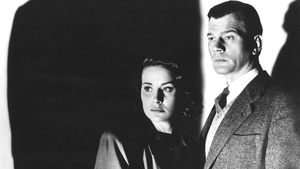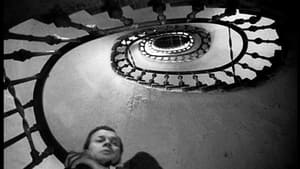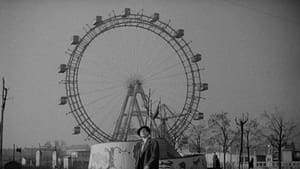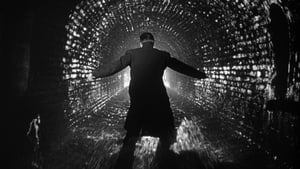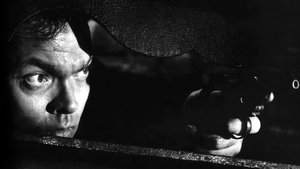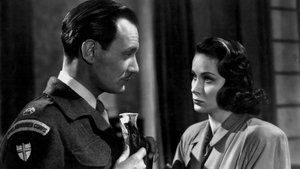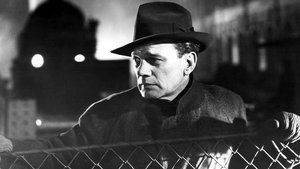Contact: [email protected]
Video Sources 0 Views
- Watch trailer
- The Third Man

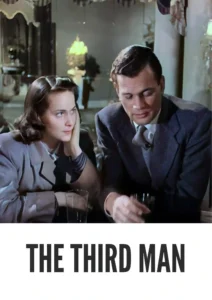
Synopsis
Table of Contents
ToggleReview: The Third Man (1949) – A Noir Masterpiece Set in Post-War Vienna

Introduction
The Third Man, released in 1949, is a cinematic masterpiece directed by Carol Reed, set against the backdrop of post-war Vienna. Renowned for its atmospheric cinematography, haunting score, and compelling storyline, this classic film noir continues to captivate audiences with its exploration of betrayal, deception, and moral ambiguity. In this review, we’ll delve into the shadowy world of The Third Man and its enduring legacy in the annals of cinema.
Check The Full Colorized Movies List
Check Our Colorized Movies Trailer Channel
Understanding The Third Man (1949): Director, Cast, and Genre
Directed by Carol Reed, The Third Man features a stellar cast led by Joseph Cotten, Orson Welles, and Alida Valli. The film belongs to the film noir genre, known for its moody visuals, morally ambiguous characters, and atmospheric storytelling.
Exploring the World of The Third Man (1949): Plot and Characters
The Third Man unfolds in post-war Vienna, where American writer Holly Martins arrives to meet his old friend Harry Lime, only to discover that Lime has been killed in a mysterious accident. As Martins investigates Lime’s death, he becomes embroiled in a web of intrigue and deception, uncovering dark secrets that threaten to consume him. Against the backdrop of a city ravaged by war, the film explores themes of betrayal, redemption, and the corrupting influence of power.
The Art of Film Colorization
While The Third Man was originally filmed in black and white, its early colorized version adds a new layer of depth to its atmospheric visuals. The colorization process enhances the film’s moody atmosphere and captures the nuances of its shadowy characters with striking clarity.
Early Colored Films: A Brief History
The history of early colored films is marked by innovation and experimentation as filmmakers sought to enhance the visual appeal of their movies. From hand-tinted frames to pioneering technicolor processes, the evolution of colorization techniques transformed the cinematic landscape, offering audiences a new way to experience the darkness and intensity of film noir.
The Third Man (1949) and Its Early Colored Version
The decision to release The Third Man in a colorized format was made with the intention of immersing audiences in the atmospheric beauty of its cinematography and enhancing the film’s visual impact. While some purists may prefer the original black and white version, the early colorized edition of The Third Man adds a new layer of depth to its atmospheric storytelling and captures the moral ambiguity of its characters with breathtaking clarity.
The Debate Over Film Colorization
The debate over film colorization continues to divide audiences and industry professionals alike. While some argue that colorization breathes new life into classic films and makes them more accessible to modern audiences, others maintain that it compromises the artistic integrity of the original work. As technology advances and filmmaking techniques evolve, the debate over colorization remains a topic of ongoing discussion within the film community.
Examining The Third Man (1949) as an Early Colored Film
Viewing The Third Man in its early colorized iteration offers audiences a fresh perspective on its atmospheric beauty and morally complex characters. The colorization process enhances the film’s moody cinematography and captures the tension and intrigue of post-war Vienna with stunning clarity. As viewers are drawn into the shadowy world of Holly Martins and Harry Lime, they are treated to a visual feast that immerses them in the timeless allure of film noir.
Influence and Legacy: The Third Man (1949)’s Impact on Cinema
The Third Man is widely regarded as a cinematic masterpiece that continues to influence filmmakers and inspire new generations of cinephiles. Its atmospheric cinematography, haunting score, and morally complex characters have left an indelible mark on cinema, shaping the way film noir is made and appreciated to this day.
Director’s Cinematic Legacy: Beyond The Third Man (1949)
Carol Reed’s directorial legacy extends far beyond The Third Man, encompassing a diverse body of work that includes acclaimed films such as Odd Man Out and The Fallen Idol. As one of the most respected filmmakers of his generation, Reed was known for his ability to craft visually stunning narratives that explored the darker aspects of the human condition with depth and nuance. The Third Man stands as a testament to his talent and creativity, solidifying his reputation as one of the great auteurs of classic Hollywood cinema.
Themes Explored in The Third Man (1949)
At its core, The Third Man explores themes of betrayal, deception, and moral ambiguity in the aftermath of war. Through its atmospheric storytelling and morally complex characters, the film offers a nuanced portrayal of the human condition, challenging viewers to confront their own beliefs about right and wrong as they navigate the treacherous world of post-war Vienna.
Reception and Controversy Surrounding The Third Man (1949)
Upon its release, The Third Man received widespread critical acclaim for its atmospheric cinematography, haunting score, and compelling storyline. While the decision to release the film in a colorized format sparked debate among purists, its enduring popularity has cemented its status as a timeless classic of the film noir genre.
Where to Watch The Third Man (1949) Online
For those eager to experience The Third Man for themselves, the film is readily available on popular streaming platforms such as Amazon Prime Video, Google Play Movies, and iTunes. Whether viewed in its original black and white format or its early colorized iteration, The Third Man offers a cinematic experience that is both atmospheric and visually stunning.
FAQs About The Third Man (1949)
1. Is The Third Man based on a true story?
No, The Third Man is a fictional film that explores the morally complex world of post-war Vienna through the eyes of its characters. While the film’s storyline may draw inspiration from real-life events, its characters and plot are works of fiction.
2. Who starred in The Third Man?
The Third Man stars Joseph Cotten in the role of Holly Martins, an American writer who becomes embroiled in a web of intrigue and deception following the death of his old friend Harry Lime, played by Orson Welles. The film also features Alida Valli as Lime’s enigmatic lover, Anna Schmidt.
3. What is the central message of The Third Man?
At its core, The Third Man explores themes of betrayal, deception, and moral ambiguity in the aftermath of war. Through its atmospheric storytelling and morally complex characters, the film offers a nuanced portrayal of the human condition, challenging viewers to confront their own beliefs about right and wrong as they navigate the treacherous world of post-war Vienna.
4. Why was The Third Man released in a colorized format?
The decision to release The Third Man in a colorized format was made with the intention of immersing audiences in the atmospheric beauty of its cinematography and enhancing the film’s visual impact. While some purists may prefer the original black and white version, the early colorized edition of The Third Man adds a new layer of depth to its atmospheric storytelling and captures the moral ambiguity of its characters with breathtaking clarity.
5. What is the legacy of The Third Man?
The Third Man is widely regarded as a cinematic masterpiece that continues to influence filmmakers and inspire new generations of cinephiles. Its atmospheric cinematography, haunting score, and morally complex characters have left an indelible mark on cinema, shaping the way film noir is made and appreciated to this day.
6. Are there any sequels or remakes of The Third Man?
No, there have been no official sequels or remakes of The Third Man. However, the film’s enduring popularity has inspired countless reinterpretations and homages in various media. Nonetheless, none have captured the atmospheric beauty and moral complexity of the original 1949 classic.
7. Where can I watch The Third Man online?
For those eager to experience The Third Man for themselves, the film is readily available on popular streaming platforms such as Amazon Prime Video, Google Play Movies, and iTunes. Whether viewed in its original black and white format or its early colorized iteration, The Third Man offers a cinematic experience that is both atmospheric and visually stunning.
Conclusion
In conclusion, The Third Man (1949) stands as a timeless classic of the film noir genre that continues to captivate audiences with its atmospheric cinematography, haunting score, and morally complex characters. Whether viewed in its original black and white format or its early colorized iteration, Carol Reed’s insightful direction and the stellar performances of the cast offer a cinematic experience that is both gripping and visually stunning. As viewers are drawn into the shadowy world of post-war Vienna, they are treated to a visceral journey that challenges their beliefs about right and wrong and leaves a lasting impact on their understanding of the human condition. The Third Man remains a cinematic masterpiece that continues to enthrall and inspire audiences around the world.

